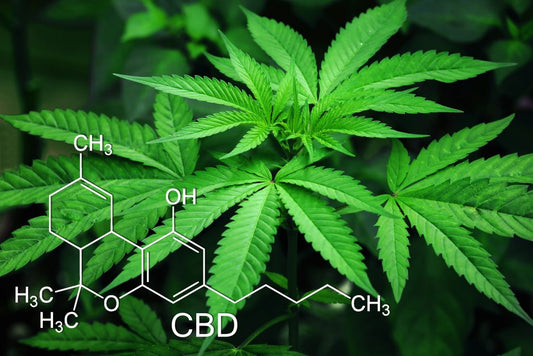Written by: Andrew Roberts
Reviewed by: Dr. Matthew Scott, PhD & DHSc
Date: 06/18/2010
The Endocannabinoid System (ECS); What Is It & How Does It Work?
The endocannabinoid system (ECS) is a biological system made up of endocannabinoids (endogenous lipid-based retrograde neurotransmitters that bind to cannabinoid receptors (CBRs)), and cannabinoid receptor proteins that are expressed throughout the vertebrate central nervous system (including the brain) and peripheral nervous system. This network of endocannabinoids and receptors support and regulate our internal equilibrium, creating homeostasis. The ECS involves regulating physiological and cognitive processes; this includes fertility, pregnancy, prenatal & postnatal development, various activities in the immune system, appetite, pain sensation, mood, and memory. ECS also plays a role in reducing the toxic “high” effects of THC toxic effects. The ECS is important for multiple aspects of neural functions, including motor function, movement, motor coordination, learning, memory, emotion, motivation, pain modulation, and addictive like behavior, among others.
The main role of the ECS is to create and promote homeostasis, homeostasis allows the body to maintain internal balance and function at its best.
What is the Endocannabinoid System?
The ECS is found in both humans and animals and responsible for regulating a variety of functions in our bodies including:
- Pain sensitivity
- Inflammation response
- Appetite
- Sleep patterns
- Mood balance
- Memory retention
- Cognitive and motor functions
- … and more
The Endocannabinoid System is comprised of (3) parts:
- Endocannabinoids or Cannabinoids
- Endocannabinoids or Cannabinoid receptors
- Enzymes
- Endocannabinoids & Cannabinoids
Endocannabinoids & Cannabinoids are chemical compounds produced naturally inside Mammals (humans & animals). They are molecules that resemble neurotransmitters (serotonin & dopamine).
These cannabinoids have a profound influence responsible for individuals' health and wellness.
The two best known cannabinoids produced in our bodies are Anadamide (AEA) and 2-arachidonoyl glycerol (2-AG).
Anandamide (AEA)
Anandamide comes from the Sanskrit word ‘ananda,’ which means “bliss” or “joy.” This endocannabinoid is thought to be the body’s natural form of THC, responsible for the euphoric feeling experienced after a rigorous workout or run. Most have heard of or experienced a “runners high”. This is caused by increased or elevated levels of anandamide.
2-arachidonoyl glycerol (2-AG) is believed to imitate some of the effects of THC, which includes improved mood, enhanced appetite, as well as anti-inflammatory and immune system response properties.
- Cannabinoid Receptors
Cannabinoid receptors are located throughout the body and part of the endocannabinoid system. They belong to a class of cell membrane receptors in the G protein-coupled receptor superfamily. Cannabinoid receptors contain seven transmembrane spanning domains, typical for G protein-coupled receptors. Cannabinoid receptors are activated by 2 main groups of ligands:
- endocannabinoids (naturally produced cannabinoid compounds in the body).
- phytocannabinoids (naturally produced cannabinoid compounds in plants).
All endocannabinoids and phytocannabinoids are lipophilic.
Cannabinoid receptors located throughout the body serve like a detection and communication mechanism. Effectively communicating and directing thousands of biochemical signals and actions. Cannabinoid receptors are activated by cannabinoids, they influence a wide range of biological functions, including but not limited to:
- Inflammation response
- Neurological signaling
- Appetite stimulation/suppression
- Heart rate
- Mood regulation
Two main types of cannabinoid receptors are known, CB1 and CB2. CB1 & CB2 receptors are similar in structure, there slight differences cause an array of different responses in the human body.
CB1 & CB2 receptors are dispersed thought our entire bodies. Primarily, CB1 receptors are more readily found in the brain and CNS (central nervous system). While CB2 receptors are primarily found in peripheral tissues, GI system (gastrointestinal), and the immune system.
Cannabinoids interact with our cannabinoid receptors in a variety of ways. Some cannabinoids act as agonists, agonists produce a biological responses like euphoria or hunger. While other cannabinoids act as antagonists, meaning they block responses. Some cannabinoids even bind receptor areas that change its structure, these are known as allosteric modulators.
- ECS Enzymes
Important ECS enzymes include: Fatty Acid Amide Hydrolase (FAAH) & Monoacylglycerol Lipase (MAGL).
These particular enzymes are important to the ECS, FAAH & MAGL are responsible for breaking down cannabinoids and regulating ECS activity. Without these enzymes, the ECS cannot properly function.
An example involves a case study involving a woman with elevated anandamide levels, due to a genetic FAAH mutation. This genetic mutation causing elevated anandamide levels caused an immunity to anxiety, unable to experience fear, and felt no pain.
Deficiencies in the Endocannabinoid System
The ECS is constantly combating external forces to create and maintain homeostasis. A properly functioning ECS is essential for peak health and wellness, allowing you to live your best life.
Endocannabinoid deficiencies in your ECS are linked to a variety of health-related issues and symptoms, including but not limited to: anxiety and mood imbalances, migraines, gut health, chronic pain, inflammation, dysfunctional immune systems, and more.
Many outside factors can also affect disruptions in our ECS, which include but are not limited to diet, stress, environmental pollutants, viruses, and genetics. Whatever the cause may be, it lets the ECS know there is an underlying issue that needs to be addressed.
Deficiencies in the endocannabinoid system can interrupt a properly functioning system, disrupting our body’s homeostasis (internal balance). This can lead to a variety of medical issue, included but not limited to:
- Mood swings
- Lack of focus
- Acne
- Anxiety
- Depression
- Insomnia
- Gut issues
- Digestive issues
- Autoimmune deficiencies
- …and more
One research study concluded that mice missing CB receptors resembled babies who suffer from “failure to thrive” syndrome. Mice lacking CB receptors didn’t feed properly and died prematurely as a result. This study indicates and reveals a clear effect resulting from a dysfunctional endocannabinoid system.
A Washington University neurologist concluded “clinical endocannabinoid deficiency” (CED) is the underlying cause for migraines, fibromyalgia, irritable bowel disease, and many other degenerative and autoimmune conditions, which respond favorably to cannabinoid therapies.
Phytocannabinoids
Cannabis treatment options for ECS deficiencies are still being researched. We do know people suffering from ECS deficiencies can benefit greatly from Full Spectrum, CBD Rich, phytocannabinoid products. Cannabinoids are essential for homeostasis in our ECS, this also helps relieve a variety of diseases, conditions, and issues. Effectively restoring your health & wellness.
Full Spectrum, CBD Rich, Phytocannabinoid products are also a powerful preventative supplement, helping maintain homeostasis and reduce the occurrence or development of diseases.
As previously mentioned above, the ECS naturally produces cannabinoids in our body, they are called endocannabinoids.
Cannabinoids naturally produced in plants are called phytocannabinoids.
Endo = body
Phyto = plants
While phytocannabinoids (plant cannabinoids) are different than endocannabinoids (ECS created cannabinoids), Phytocannabinoids still interact and affect our ECS receptors and response, the same way endocannabinoids do.
Endocannabinoids and Phytocannabinoids work hand in hand with our ECS, affecting and benefiting our CB1 & CB2 receptors in a variety of ways.
Some cannabinoids have a stronger binding affinity to receptors, which can cause a more heightened biological response and effects.
Some cannabinoids have a lower binding affinity to receptors, causing a more subtle response and effects.
Some cannabinoids are agonist and antagonist, meaning they can increase or inhibit certain receptors. Essentially meaning they can also block receptors altogether, hindering specific unwanted responses entirely. For example, CBD blocks or mitigates certain negative aspects associated with THC.
The World Health Organization (WHO) has reported that CBD rich cannabinoids can influence several non-endocannabinoid signaling systems. Some of these mechanisms include:
Inhibition of adenosine uptake, possibly resulting in indirect agonist activity at adenosine receptors.
- Enhance 5-HT1a receptor activity.
- Enhanced activity at glycine receptor subtypes.
- Blockade of the orphan G-protein-coupled receptor GPR55.
CBD binds to both the CB1 & CB2 receptors and its ability to alter receptor shapes is just another reason why millions of people are now using CBD to help control or manage a variety of different conditions, illnesses, and diseases.
Some of the conditions include:
- Anxiety
- Depression
- PTSD
- Epilepsy
- Chronic Pain
- Inflammation
- Arthritis
- Hormonal imbalance
- Parkinson’s Disease
- Alzheimer’s Disease
- Multiple Sclerosis
- Irritable Bowel Syndrome
- Fibromyalgia
- Substance Abuse Disorders
- Cardiovascular disease
- Diabetes
- Cancer
Taking CBD for Endocannabinoid System Homeostasis.
Introducing CBD rich cannabinoids to create ECS homeostasis is now easier than ever. Some of the most popular methods for CBD use include tinctures, topicals, vaping, smoking, and edibles, all provide an effective way to get CBD into your ECS. What CBD product an individual chooses is typically based off factors such as lifestyle, reason, goals, and personal preference.
Probably one of the most important factors is who or how the product was formulated or made and hoping the cannabinoid content is correct. Always seek out the highest quality products from reputable, established companies; like CBD Wellness. Otherwise, you may be one of the millions who bought and used a low-quality CBD product and found it didn’t do anything at all. Once you choose a reputable, established company and pick out the product or products you intend to use, you will need to find what dose and regimen is optimal for you and the reason your taking CBD.
Unfortunately, the market is flooded with non-reputable companies, producing extremely low-quality products. It's estimated that 85% of the CBD products on the market contain less than 10% of the MG amount listed (many have been tested and confirmed to contain no cbd or cannabinoids). Cannabis MG and botanical supplements in general, measure the “MG” amount based off the weight of the plant used. For example, A company is making a CBD tincture, there cbd extract contains 10% cbd potency, they put 1gram (which equals 1,000mg) of the cbd extract in the product, because the product received 1gram or 1,000mg that is how the product is labeled “1,000mg CBD tincture”. However, that product does not contain 1,000mg of CBD, remember it only contained 10% cbd potency, so that mean the product only have 100mg of activated CBD. In order for this product to have 1,000mg of activated CBD, the producer would have needed to formulate 10grams or 10,000mg of that extract to contain 1,000mg of activated CBD.
This makes every single company & brand essentially have the same MG but contain completely different active cannabinoids.
At CBD Wellness our Chief Scientist formulates standardized products, the MG amount listed on each of our products actually contains that amount in activated CBD rich cannabinoids. CBD Wellness is well known for our superior quality and product effectiveness, our products have help millions maintain homeostasis, restore homeostasis, allowing your system to perform optimally and heal as intended.
CBD Wellness commitment
- 100% organically grown, non-GMO, full spectrum, phytocannabinoid, CBD rich hemp.
- Grown, extracted, and formulated in the USA.
- Scientist & Doctor formulated, all CBD Wellness product formulations are unique & proprietary. No other CBD products compare.
- Manufactured using GMP, state licensed registered facility.
- Every batch is 3rd party tested for potency, quality, and safety.
- Free of heavy metals, harsh chemicals, solvents, pesticides, & molds
- 2014/2018 Farm Bill compliant, Legal in all 50 states.
- 30-day 100% money back guarantee
- Free shipping in the US for orders over $50.00
Lastly, every product you buy from CBD Wellness helps people and families in need of CBD products but cannot afford. We also fund varies educational and research to further benefit the cannabis industry as a whole.
As always, if you have any questions about this article, CBD Wellness, our products, or anything else involving Cannabis or CBD please feel free to get in touch at contact@cbdwellness.com We are here to help you improve your health and help you live your best life.
Endocannabinoid System Conclusion
The main purpose of the ECS is homeostasis.
The ECS is made up of cannabinoids, receptors and enzymes.
ECS deficiencies may present as anxiety, pain, migraines, GI issues, inflammation and or other health related issues.
Endocannabinoids (cannabinoids naturally present in the human body) interact with our ECS to communicate and create homeostasis, helping alleviate a variety of medical conditions.
Phytocannabinoids (cannabinoid naturally present in plants) can interact with our ECS system, effectively restoring balance (homeostasis), helps with various medical issues and conditions.
CBD interacts with our ECS in multiple ways, providing an array of health benefits.




